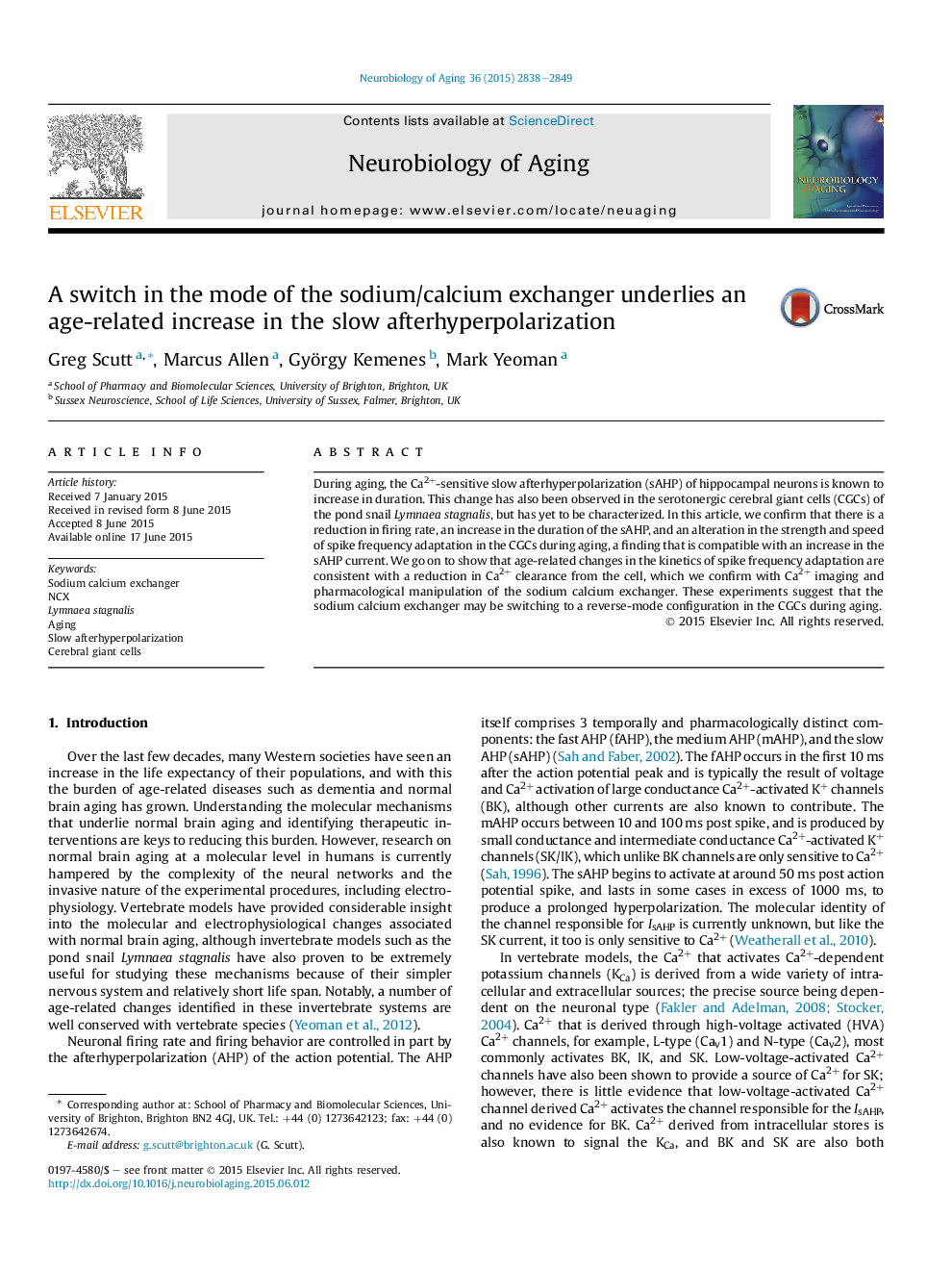| Article ID | Journal | Published Year | Pages | File Type |
|---|---|---|---|---|
| 6803910 | Neurobiology of Aging | 2015 | 12 Pages |
Abstract
During aging, the Ca2+-sensitive slow afterhyperpolarization (sAHP) of hippocampal neurons is known to increase in duration. This change has also been observed in the serotonergic cerebral giant cells (CGCs) of the pond snail Lymnaea stagnalis, but has yet to be characterized. In this article, we confirm that there is a reduction in firing rate, an increase in the duration of the sAHP, and an alteration in the strength and speed of spike frequency adaptation in the CGCs during aging, a finding that is compatible with an increase in the sAHP current. We go on to show that age-related changes in the kinetics of spike frequency adaptation are consistent with a reduction in Ca2+ clearance from the cell, which we confirm with Ca2+ imaging and pharmacological manipulation of the sodium calcium exchanger. These experiments suggest that the sodium calcium exchanger may be switching to a reverse-mode configuration in the CGCs during aging.
Related Topics
Life Sciences
Biochemistry, Genetics and Molecular Biology
Ageing
Authors
Greg Scutt, Marcus Allen, György Kemenes, Mark Yeoman,
